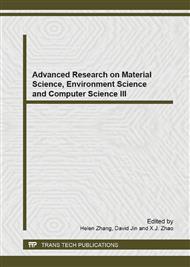p.115
p.119
p.123
p.128
p.132
p.136
p.143
p.147
p.151
Rotation Feature of Three-Dimensional Tile Self-Assembly Molecular Structure for Efficient Microprocessor Material
Abstract:
Future application of nanoscale tile self-assembly is the production of smaller, more efficient microprocessors.In this paper, a new three-dimensional tile self-assembly molecular structure is presented.The model adds rotation movement where large assemblies of nanoscale tile molecules can be moved around, analogous to molecular motors. We have showed the universalityof the new model and demonstrated that three-dimensional model is capable of simulating two-dimensional model. This paper also covers the details about path encoding. The encoding process makes use of edgecharactersof tilesto simplify the design.
Info:
Periodical:
Pages:
132-135
Citation:
Online since:
January 2014
Authors:
Price:
Сopyright:
© 2014 Trans Tech Publications Ltd. All Rights Reserved
Share:
Citation:


